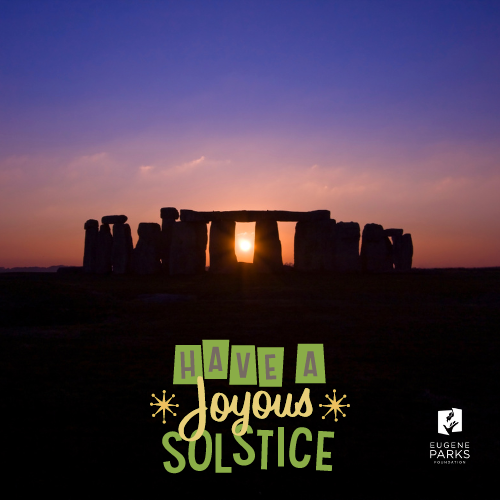 The summer solstice always takes place between the 20th and 22nd of June. This year, in 2024, it will fall on June 20. The word “solstice” comes from the Latin words “sun” and “to stand still.” It is the longest day of the year, marking the pivotal moment when the sun reaches its highest point in the sky. This celestial event has been celebrated by cultures around the world for millennia, giving rise to a myriad of traditions and rituals that honor the power of the sun and the life it sustains. Understanding and celebrating the history and traditions of the summer solstice deepens our connection to the natural world and to the cycles that govern it.
The summer solstice always takes place between the 20th and 22nd of June. This year, in 2024, it will fall on June 20. The word “solstice” comes from the Latin words “sun” and “to stand still.” It is the longest day of the year, marking the pivotal moment when the sun reaches its highest point in the sky. This celestial event has been celebrated by cultures around the world for millennia, giving rise to a myriad of traditions and rituals that honor the power of the sun and the life it sustains. Understanding and celebrating the history and traditions of the summer solstice deepens our connection to the natural world and to the cycles that govern it.
The Astronomical Significance
The summer solstice occurs when the earth’s axial tilt is directed toward the sun. This results in the longest day of the year, with the sun tracing its highest path across the sky. Ancient civilizations recognized this event as a time of great importance, marking the transition from planting to growing season, as well as a time to celebrate the vitality and abundance of nature.
Ancient Traditions
One of the most iconic monuments associated with the summer solstice is Stonehenge in England. This prehistoric structure, believed to be over 4,000 years old, is aligned with the solstitial sunrise. Each year, thousands of people gather at Stonehenge to witness the sunrise, as the sun’s rays line up perfectly with the Heel Stone and the central Altar Stone, creating a breathtaking spectacle. The alignment suggests that the solstice was significant to the builders of Stonehenge. The reason behind the significance remains unknown, but it could be related to agricultural practices, religious beliefs, or social structures of the ancient civilization.
In Ancient Egypt, the summer solstice heralded in the new year and the annual flooding of the Nile River, a critical event for agriculture. The solstice coincided with the rising of the star Sirius, which the Egyptians associated with the goddess Isis. The flooding of the Nile was seen as a divine gift, replenishing the land and ensuring the survival of their civilization. Celebrations included offerings to the gods and rituals to honor the life-giving waters.
The Maya and Aztec civilizations also observed the summer solstice with great reverence. The Maya, renowned for their astronomical knowledge, constructed their temples and pyramids in alignment with the solstices and equinoxes. The pyramid at Chichen Itza in Mexico, for instance, was designed to produce a serpent-like shadow during the summer solstice, symbolizing the descent of the feathered serpent god, Kukulkan. These events were celebrated with feasts, dances, and ceremonies to ensure agricultural fertility and cosmic harmony.
Current Traditions
In Scandinavia, the summer solstice is known as Midsummer and is one of the most important holidays of the year. Midsummer celebrations typically include dancing around the maypole, singing traditional songs, and feasting on local delicacies. Bonfires are lit to ward off evil spirits and to celebrate the triumph of light over darkness. These gatherings often take place in natural settings, highlighting the deep connection between Scandinavian cultures and their unique environment.
In many parts of Europe, the summer solstice is called Saint John’s Eve, in honor of St. John the Baptist. This Christianized version of the solstice incorporates older pagan customs, such as lighting bonfires and performing rituals to purify and protect communities. In Spain, the night of San Juan is marked by beach bonfires and fireworks, with revelers jumping over fires to cleanse themselves of sin and to ensure good luck for the coming year.
Many Native American tribes have rich traditions surrounding the summer solstice. The Sioux hold the Sun Dance, a ceremonial gathering that involves dancing, singing, and prayers to honor the sun and to seek spiritual renewal. This event is a time for communal bonding and reaffirming connections to the land and the cosmos.
In Alaska, the summer solstice is celebrated with a midnight baseball game called the Midnight Sun Game. The game starts at 10:00 pm and goes well into the next morning, without the need for any artificial light. The Midnight Sun Game has been played since 1906!
How to Celebrate the Summer Solstice in Eugene
The summer solstice is a great time to intentionally engage with nature, by exploring one of Eugene’s many beautiful parks. Activities might include the following:
- Gathering with a group of friends to watch the sunrise or sunset, perhaps from atop Skinners Butte or Spencer Butte.
- Taking a walk to explore the flora and fauna of the area, reflecting on how the summer solstice affects our natural world.
- Spending time meditating in nature or practicing yoga.
The summer solstice is a time to celebrate the abundance of nature, the power of the sun, and the cycles that sustain life on Earth. By understanding and honoring the diverse traditions associated with this day, we can deepen our appreciation for the natural world and strengthen our commitment to preserving it. For all of us at Eugene Parks Foundation, embracing the summer solstice can inspire a greater connection to the environment and foster a sense of community among all who gather to celebrate this ancient and enduring event.
